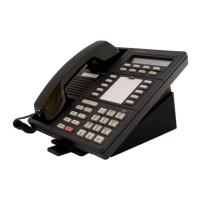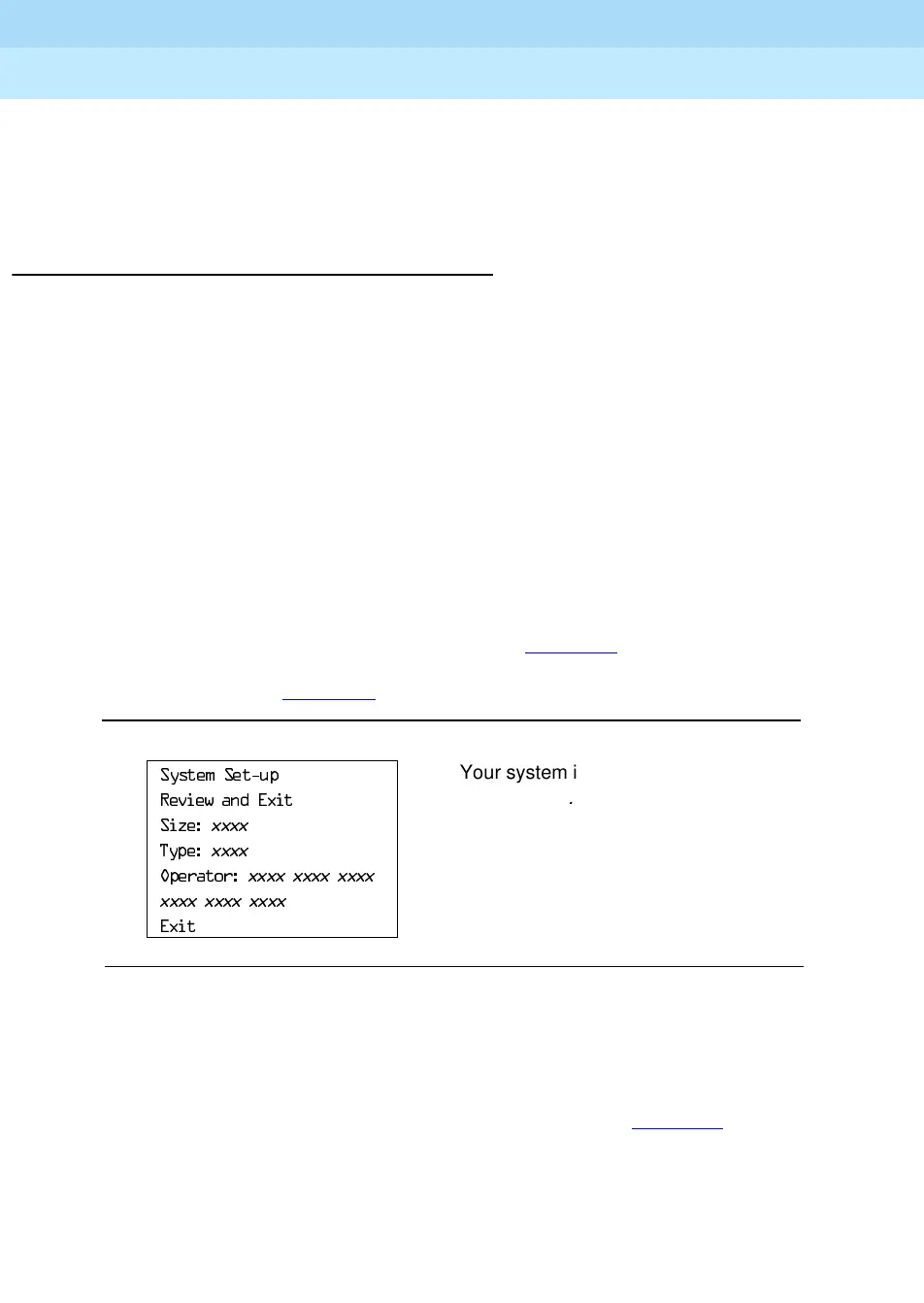MERLIN LEGEND Communications System Release 6.1
System Manager’s Guide
555-661-118
Issue 1
August 1998
Managing the System
Page 6-6Introduction to System Programming
6
This chapter describes system programming and centralized telephone
programming (both on the system programming console and on a PC with SPM).
For information about extension programming, see the appropriate user and
operator guides.
Programming Screens 6
There are three types of system programming screens:
■ Information Screens. To view what is currently programmed on the
system. You cannot make changes on an information screen.
■ Menu Selection Screens. To select features or options to program.
■ Data Entry Screens. To enter values or to identify a specific extension or
line/trunk you want to program.
This section describes each screen type and the System Programming menu; it
also provides information about saving entries and moving among screens.
Information Screens 6
Information screens display what is currently programmed on your system. You
cannot make changes on an information screen. Figure 6–1
shows a sample
information screen. When you select
6\V 3URJUDP from the main menu screen,
the screen shown in Figure 6–1
appears with system setup information.
Figure 6–1. Information Screen
Menu Selection Screens 6
A menu selection screen prompts you to select a listed option. The screen title is
the first line on all screens. The second line contains a system prompt or
instruction. The remaining lines of text vary based on options. Figure 6–2
shows a
sample menu selection screen.
An angle bracket (
!) appears in the upper right corner of menu selection screens
that have additional option screens. Press More (or
on the PC) to see the
additional screens. Continue to press More to move through the screens and
eventually return to the original screen.
6\VWHP6HWXS
Your system information appears in
5HYLHZDQG([LW
place of
xxxx
.
6L]H
YYYY
7\SH
YYYY
2SHUDWRU
YYYY
YYYY
YYYY
YYYY
YYYY
YYYY
([LW

